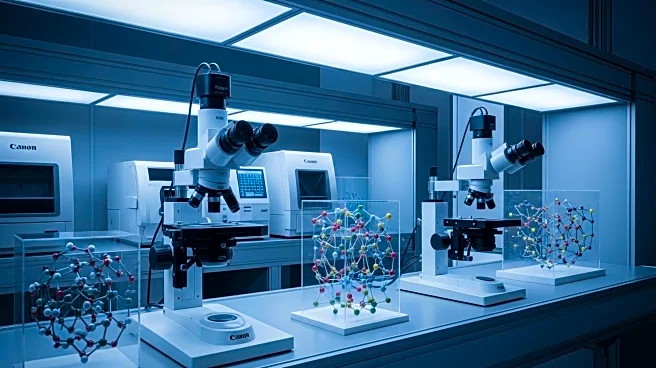What's Happening?
Illumina, a leader in next-generation sequencing, is set to release a new spatial transcriptomics technology next year. This technology, unveiled at the 2025 Advances in Genome Biology and Technology (AGBT) General Meeting, is compatible with Illumina's NextSeq and NovaSeq sequencers. It aims to allow researchers to examine the spatial proximity of millions of cells per experiment, offering a capture area nine times larger and with four times greater resolution than current technologies. The technology has been highlighted by researchers from the Broad Institute, St. Jude Children's Research Hospital, and TGen, who shared data on their use of Illumina's spatial technology.
Why It's Important?
The introduction of Illumina's spatial transcriptomics technology is significant for the field of genomic research, as it promises to enhance the resolution and scale of spatial analysis in biological studies. This advancement could lead to more detailed insights into cellular interactions and the spatial organization of tissues, which are crucial for understanding complex biological processes and diseases. Researchers and institutions stand to benefit from improved data accuracy and the ability to conduct larger-scale experiments, potentially accelerating discoveries in areas such as cancer research and developmental biology.
What's Next?
Illumina plans to commercially release the spatial transcriptomics technology next year, which could lead to widespread adoption in research institutions. As researchers begin to utilize this technology, it is expected that new findings and applications will emerge, further advancing the field of spatial genomics. The technology's compatibility with existing Illumina sequencers may facilitate its integration into current research workflows, potentially leading to collaborations and partnerships aimed at exploring its full potential.
Beyond the Headlines
The development of spatial transcriptomics technology by Illumina reflects a broader trend in genomics towards integrating spatial data with genetic information. This approach could revolutionize personalized medicine by providing more comprehensive profiles of individual patients' cellular environments, leading to tailored treatment strategies. Additionally, the technology may contribute to ethical discussions around data privacy and the use of genetic information, as it enables more detailed mapping of biological systems.










